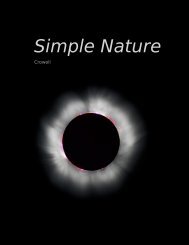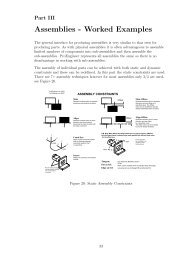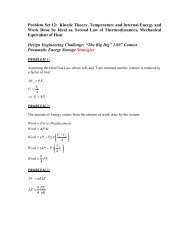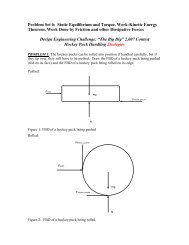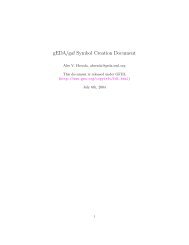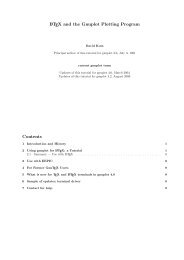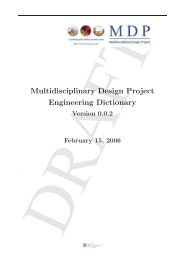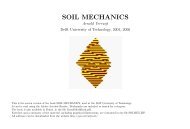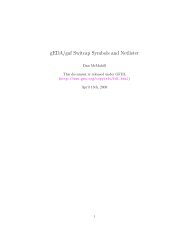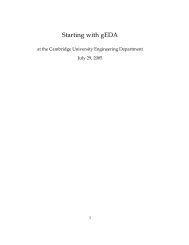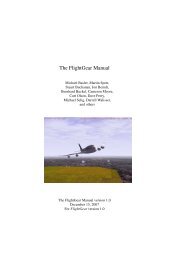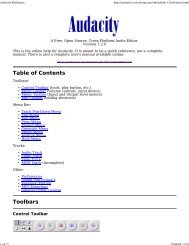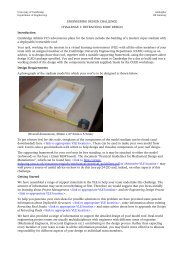Manual - (MDP) Project
Manual - (MDP) Project
Manual - (MDP) Project
- No tags were found...
Create successful ePaper yourself
Turn your PDF publications into a flip-book with our unique Google optimized e-Paper software.
Building a Recognition Dictionary When in training mode, any stroke that is not sufficiently recognizedcauses a dialog box to pop up. You type what it is you are trying towrite in this box. Note that your are not limited to single characters;if you are ambitious you can build an entire system of shorthand, wheresingle small strokes write entire large sentences.How it Works (or Doesn’t) Each stroke is normalized to a common scale (so a very large B looks thesame as a very small B). Then a whole bunch of different methods are usedto try to determine which stroke/strokes in the dictionary match whateveryou are drawing, and they are averaged together to get a score. Then atable of probabilities of pairs of letters is applied to guess, for example,that if the previous letter was a q, the next letter probably isn’t goingto be an x. (The mini-Jarnal does not do this guessing or spacing - seebelow.) Spacing is handled by seeing how far apart you drew your letters,and also using the table of letter pairs - it turns out, for example that informal writing at least, few English words end in the letter i, so if youtry to write hi, you may find the results surprising. The table of pairs iscontained in images/pairs.txt in the Jarnal.jar file - and it can be replacedby another table. Here is a PHP script that reads a text file in the samedirectory called ”sample.txt” and writes (to the screen) the correspondingtable of conditional probabilities. So use php -q analyze.php ¿pairs.txt,to get your pairs.txt file. Feel free to replace the existing pairs.txt withyour new one. The default table was generated by downloading fromGutenberg a subset of their most popular books meeting certain criteria,such as having been originally written in English and being available inascii format, sticking them together in a large file called sample.txt andrunning analyze.php. The books actually used were Ulysses, Relativity:the Special and General Theory, The Adventures of Sherlock Holmes, andThe War of The Worlds, which should be random enough for practicallyanyone.Source Code The source is Janalyze.java. This has no dependencies on any other partof Jarnal, so can be dropped into any other project by simply changingthe first line of the file to reflect the correct package. However, I haven’tdocumented the API yet, so you’ll have to guess this by reading the code.The mini-Jarnal if you open Jarnal from the command line with the switch -mini a mini-Jarnal will open. The mini-Jarnal is highly customized for handwritingrecognition. It supports enough different sets of symbols that you canactually write something and have it recognized. Recognized text is copiedto the clipboard so you can transfer it to other programs. There is alsoa calculator mode that treats whatever was recognized as an arithmeticexpression and attempts to evaluate it, copying the result to the clipboard.The philosophy of the mini-Jarnal is somewhat different than that of textrecognition in Jarnal proper, although both share the same basic engine.In Jarnal it tries to make an educated guess at what you meant to write,and if you print clearly, it will get it right to a surprising extent. (And9



